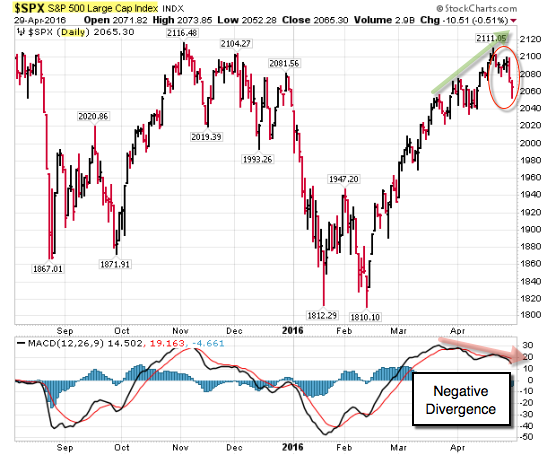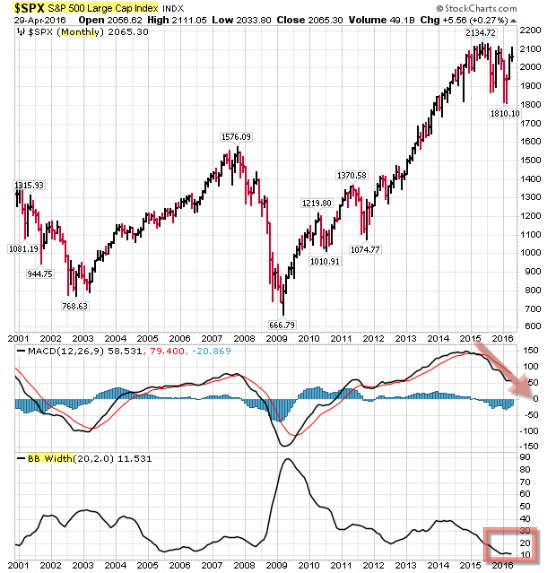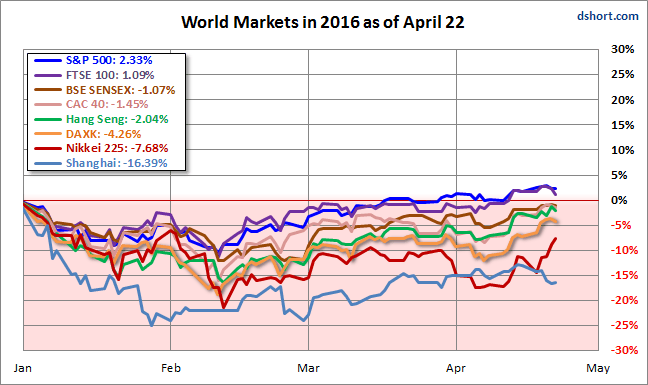Here is a summary of world market performance from Doug Short at Advisor Perspectives.
The global rally in equities continued last week, but at a subdued pace. A benchmark 'gang of eight' group of global indices posted an average gain of 0.85% (well off the 3.86% average of the previous week). Moreover, that average included a 4.30% surge in Japan's Nikkei (which follows its 6.49% thrust the previous week).
A Closer Look at the Last Four Weeks
The tables below provide a concise overview of performance comparisons over the past four weeks for these eight major indexes. The average for each week also is included to evaluate the performance of a specific index relative to the overall mean and better understand weekly volatility.
A Closer Look at the Year-to-Date Performance
Here is an overlay of the eight illustrating their comparative performance so far in 2016.
 Here is a table of the 2016 performance, sorted from high to low, along with the interim highs for the eight indexes.
Here is a table of the 2016 performance, sorted from high to low, along with the interim highs for the eight indexes.
The top performing S&P 500 and the UK's FTSE 100 are the only two indexes with year-to-date gains, unchanged from last week.
China's Shanghai Composite earned the dubious distinction of biggest loser last week, supplanting the soaring Nikkei in the basement. After this week's loss, it has fallen deeper into the YTD red.
All the indexes are calculated in their local currencies.







